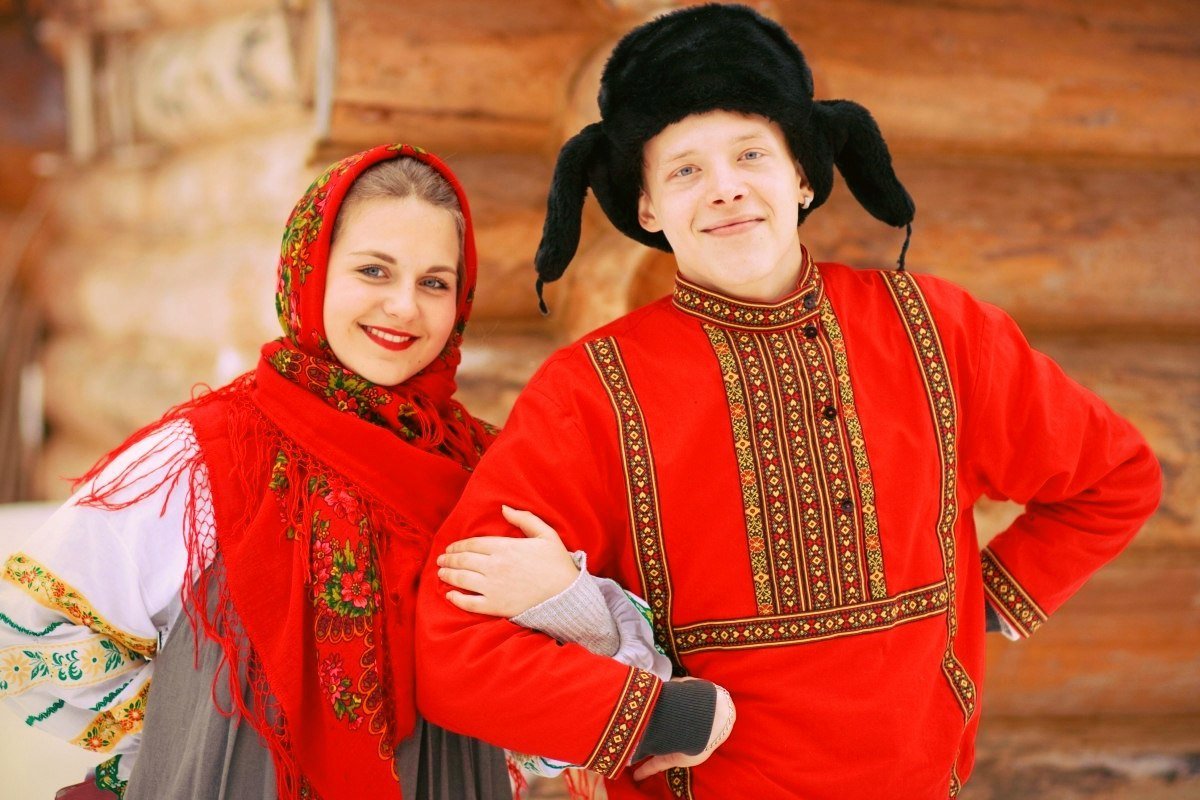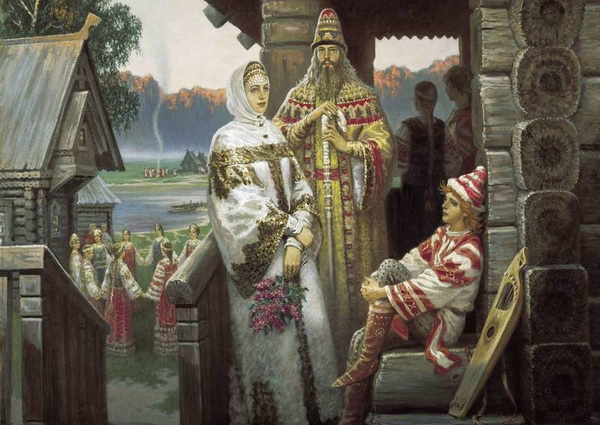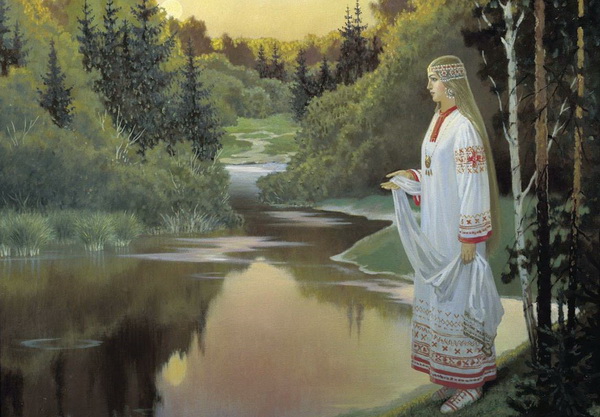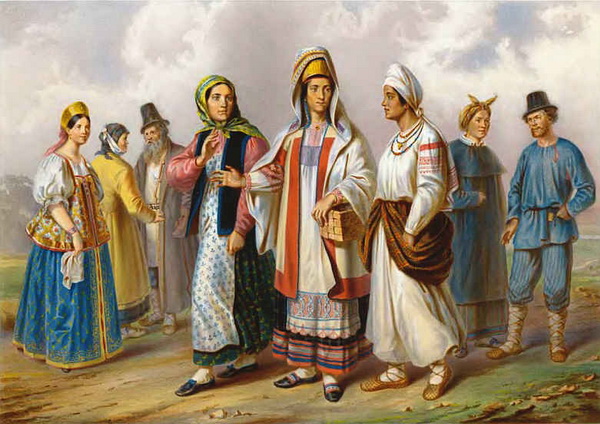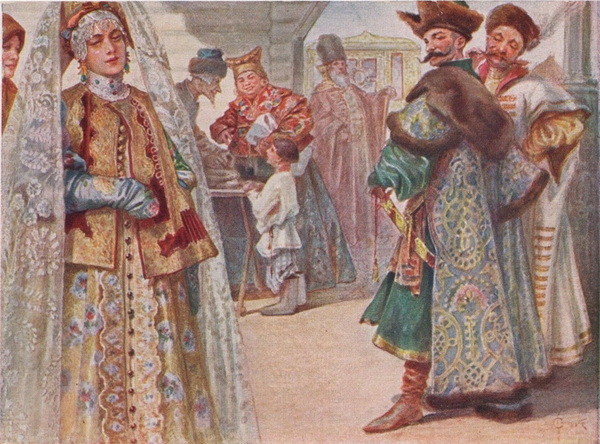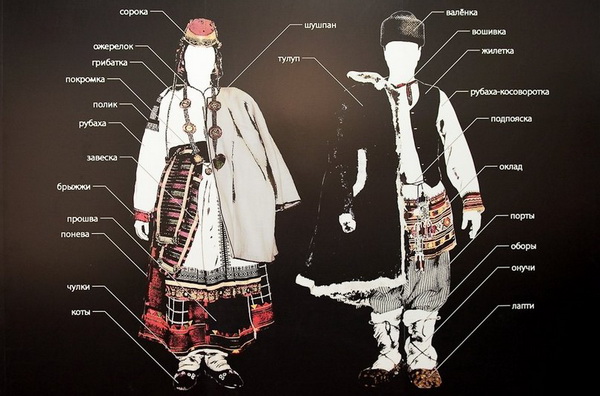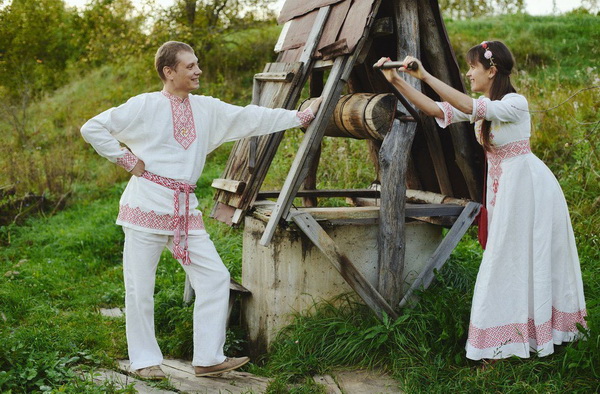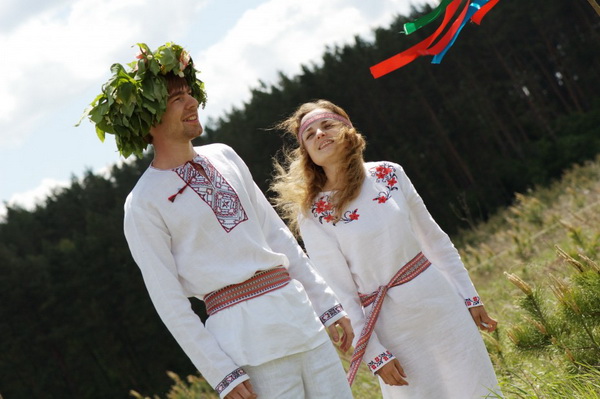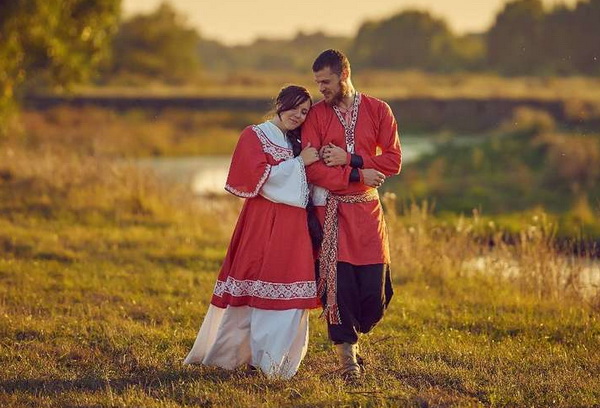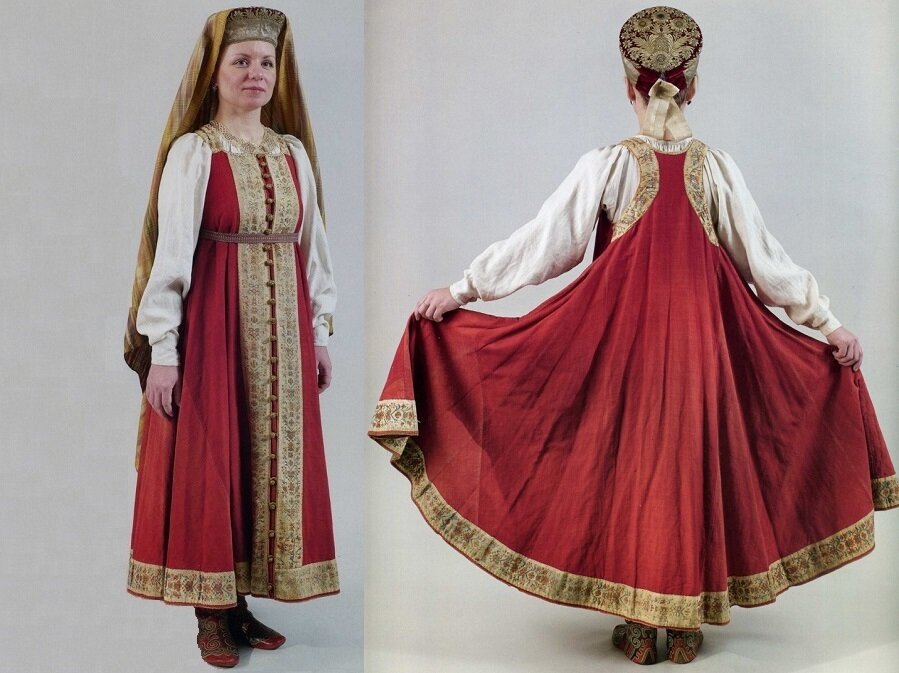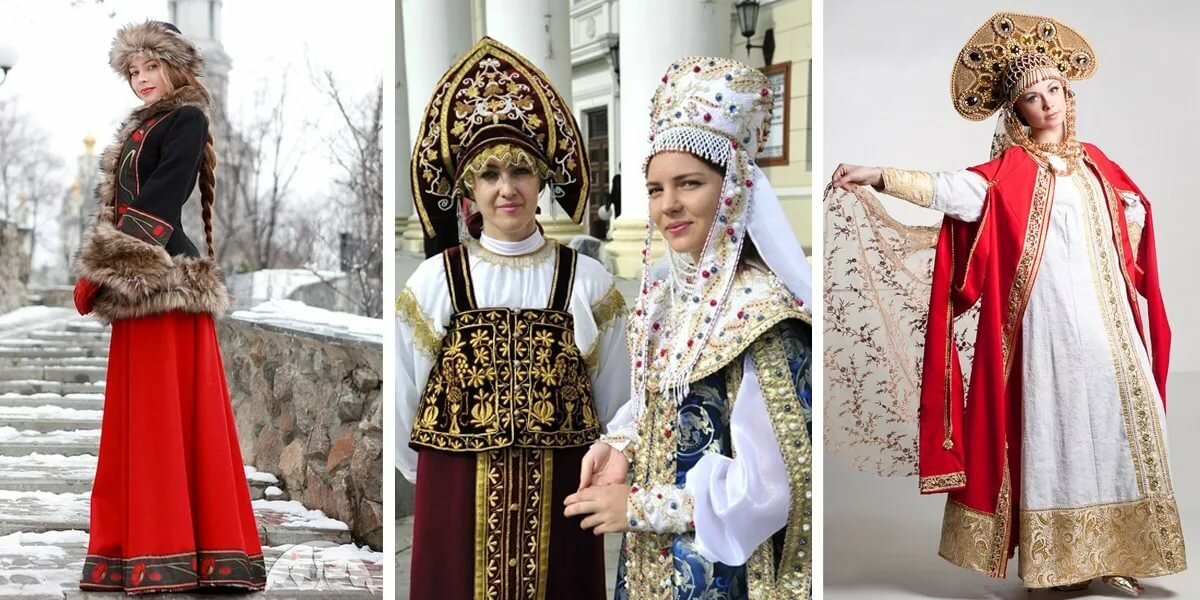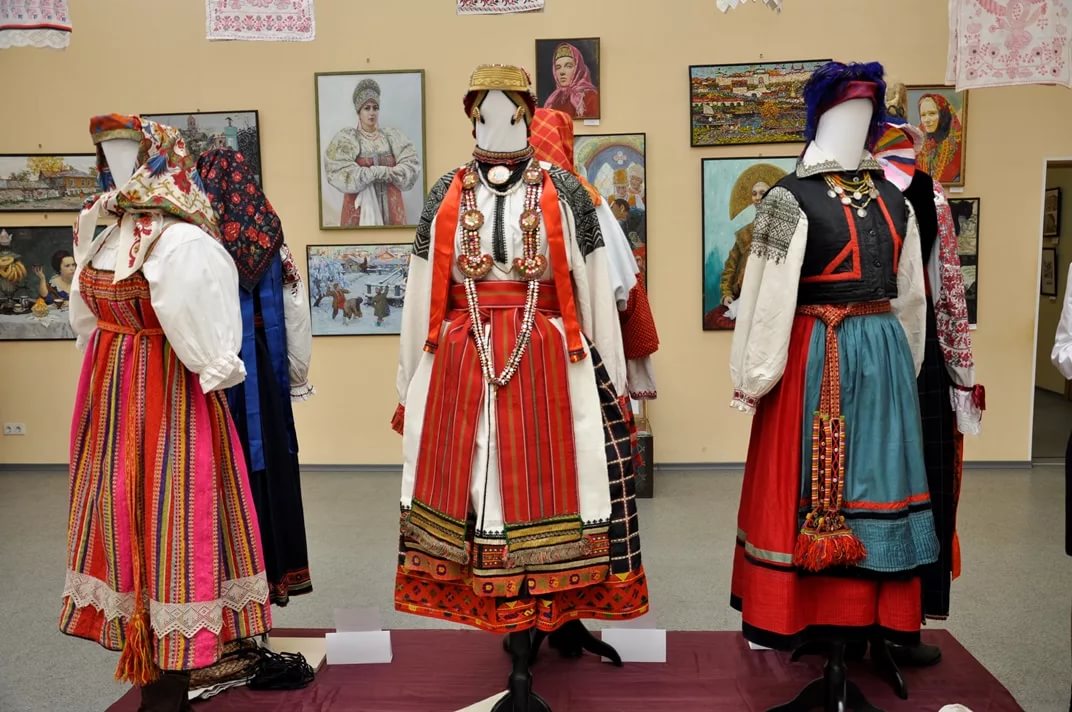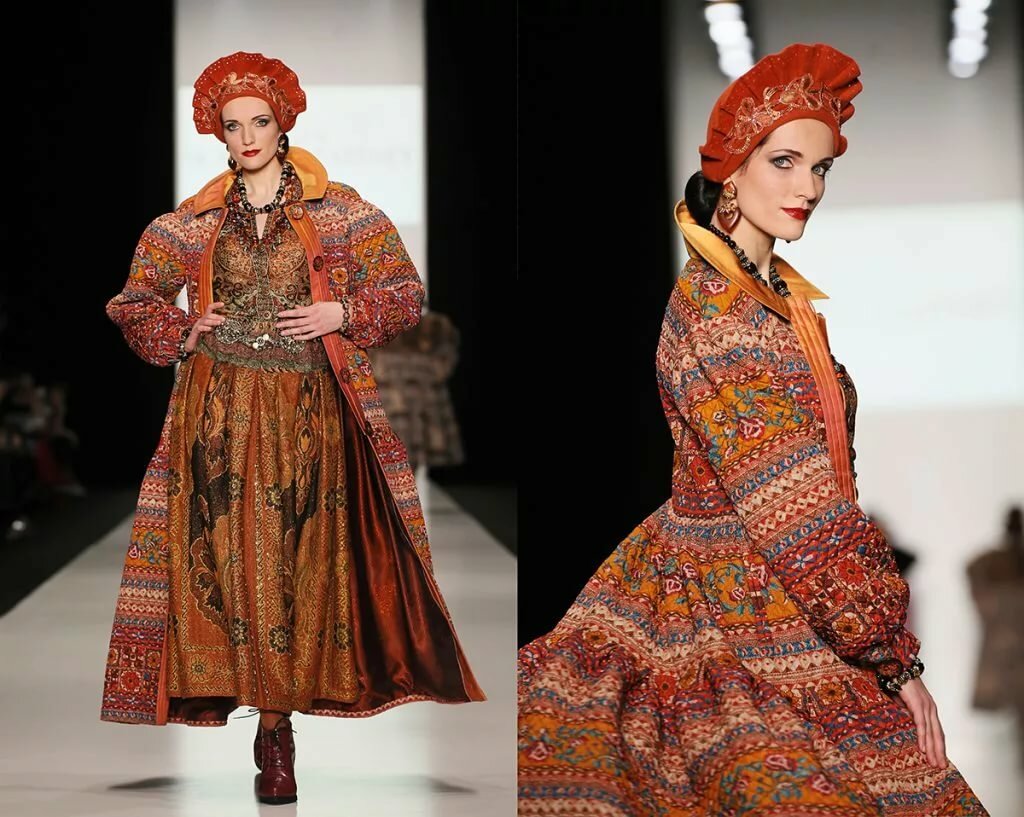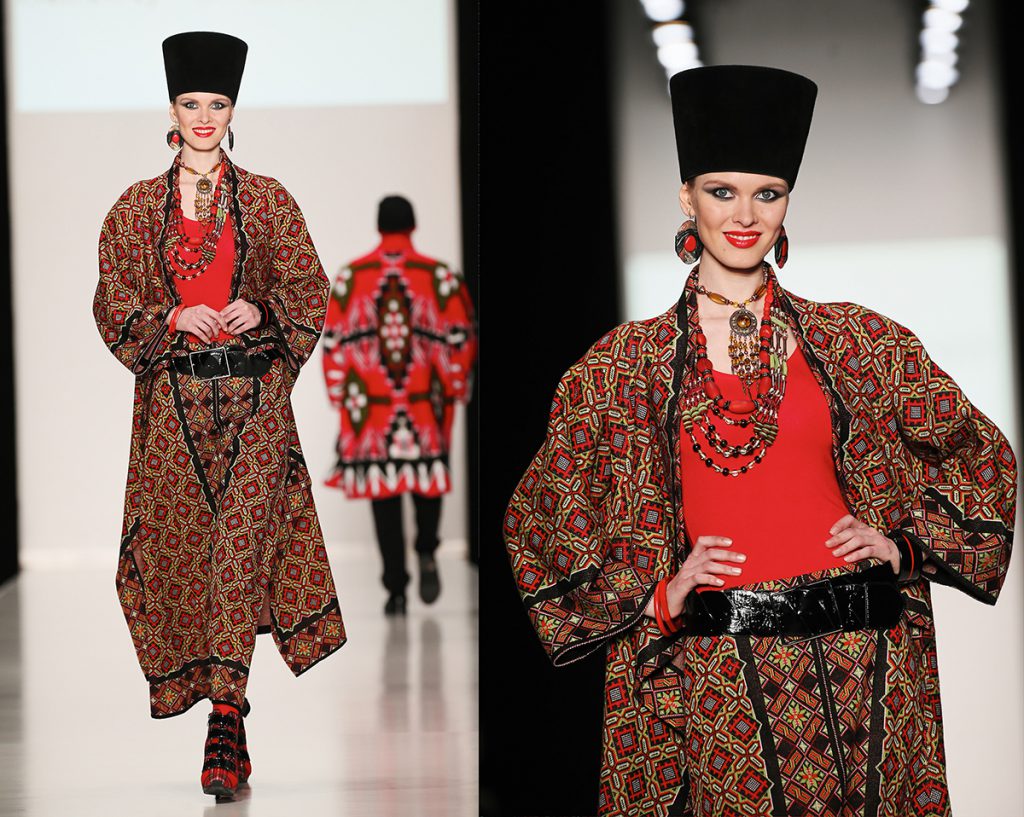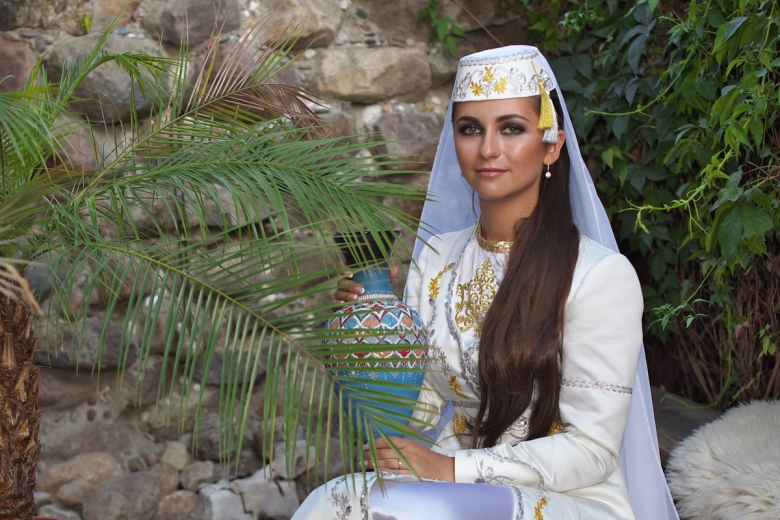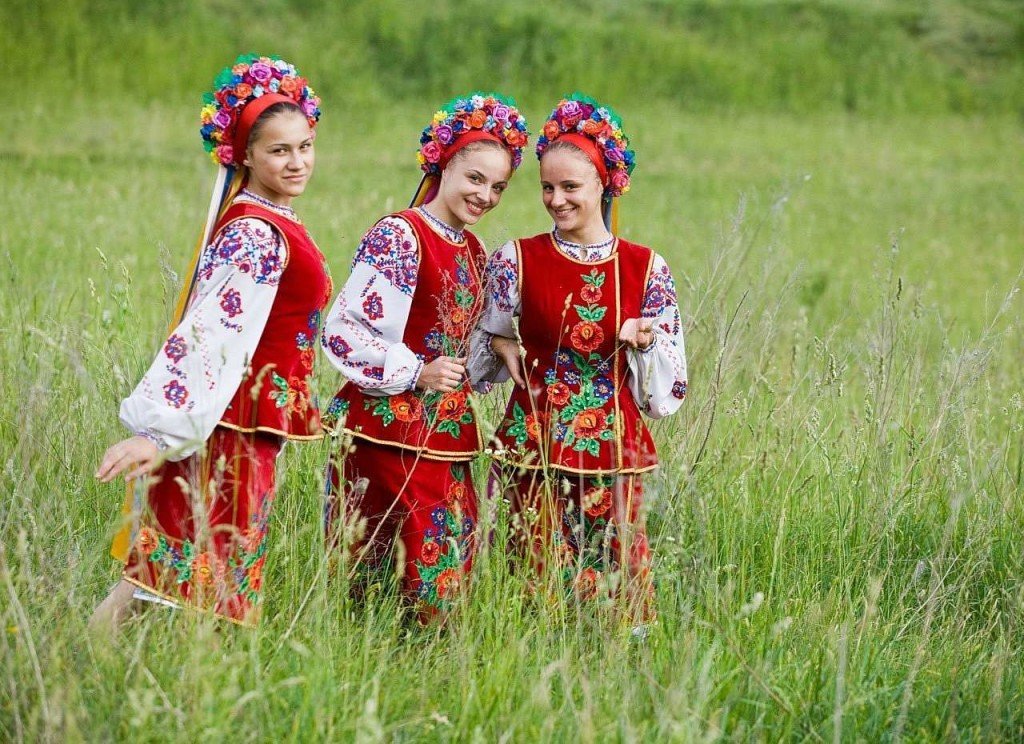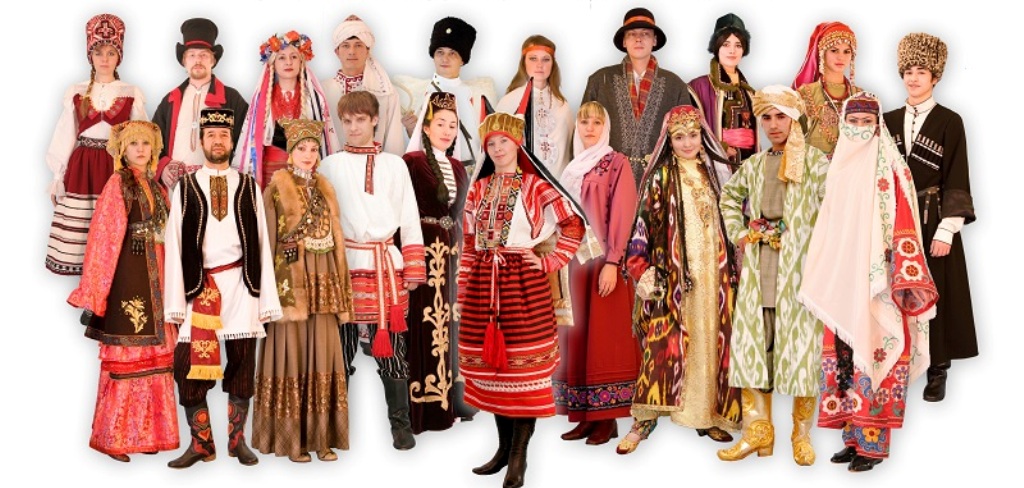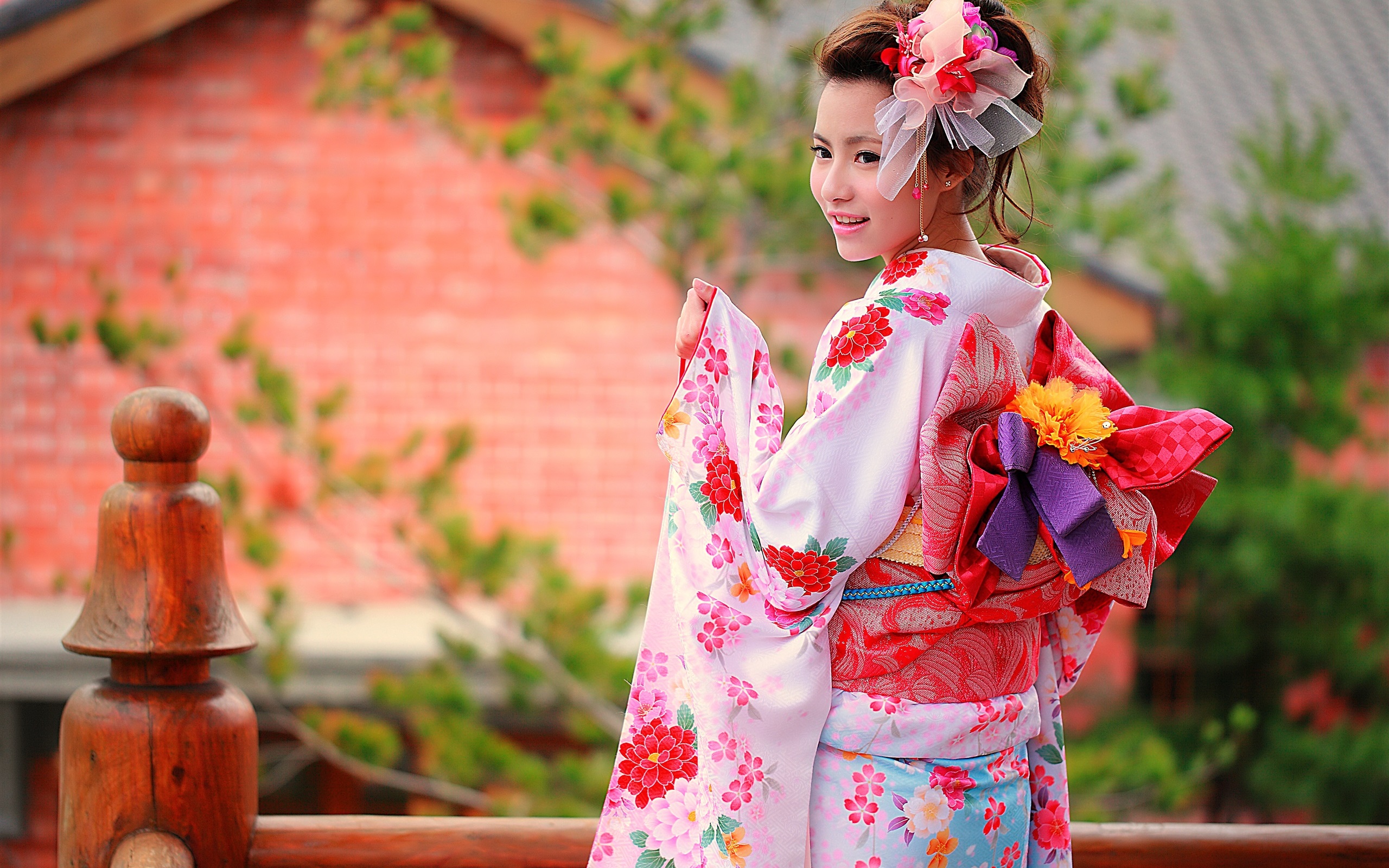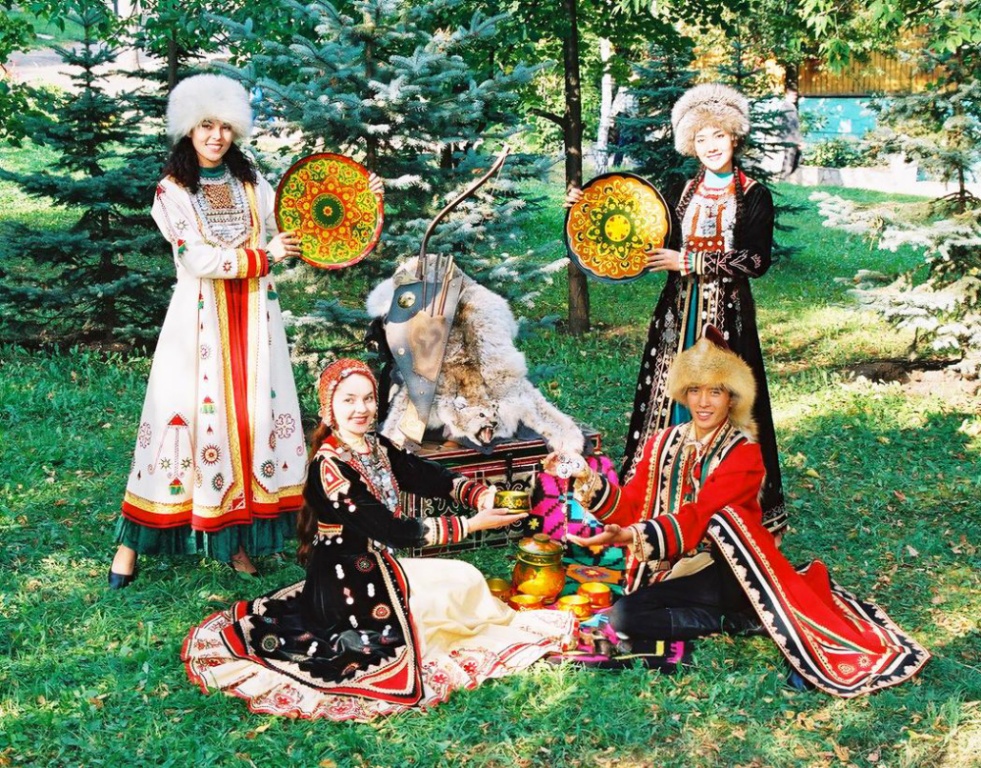Traditional clothing is a reflection of the culture, history and customs of the people. Depending on major events in people's lives, certain details were added to the Russian national costume, new patterns appeared in embroidery and decorations. More than two hundred nations lived in Russia at different times, and each of them had its own special outfit. Moreover, clothing differed even in neighboring villages of the same province.
History of formation
The Slavic attire from the 5th to the 9th centuries AD resembled the clothing of their closest neighbors, the Sarmatians and Scythians. These were good shirts made of coarse wool, felt, fish skin and animal fur. With the development of trade routes and the appearance of new, more elegant, fine fabrics, the national costume began to change. Roman culture had a great influence on the richness of Russian clothing, and later the Greeks also made their contribution.
In the 10th century, after the Baptism of Rus, elements of Byzantine dresses appeared in the costume. The clothes of this time were already dominated by elements of solemnity, they began to be decorated with gold, silver, items covered with enamel, niello. Common people continued to wear traditional clothes, which were mostly overhead (put on over the head). Occasionally, open items were found.
The 12th and 15th centuries left few sources about how people of ancient Rus' dressed. Thanks to images in book miniatures, icons, frescoes, modern people have a certain idea of the clothes of that time. During this period, Russian life was isolated. The costume underwent a transformation - it became more respectable. Heavy, long-tailed fur coats, long caftans, hanging sleeves appeared.
In the 16th-17th centuries, new elements of clothing appeared for both men and women - caftans and zipuns. Wealthy people wore coats made of expensive furs over them. Caftans were long, dress-like garments, to which standing trumps (collars) were sewn. To show their wealth, they were embroidered with gold, silver, and pearls. Caftans were worn for various events - mourning, holidays, and trips. Women had virtually no variety. Their outerwear was opashni (wide items with hems, the hood of which was trimmed with fur). The sleeves of the national costume were narrow, long, and therefore gathered on the arms.
Before Peter I ascended the throne, the national Russian costume changed slowly, and new styles took decades to master. But the Tsar, having visited Europe, decided to refine the appearance of his subjects and in January 1700 issued a decree "On wearing clothes in the Hungarian manner." French national fashion was taken as a model. Men were required to wear short, tight trousers - culottes, combining them with white stockings and a camisole. Massive shoes with buckles were prescribed for the feet, and the head was covered with a powdered wig. Women adopted the new fashion more willingly: wide skirts on a frame hid figure flaws, high-heeled shoes made the gait seductive, and a fitted top with a deep neckline favorably lifted the chest.
In the late 18th and early 19th centuries, men wore grey cloth armyaks, fur coats (sheepskin), hats and leather mittens in the cold season. In severe frosts, they could cover their necks with a scarf. In the summer, they also wore armyaks, but made of ponito, half-caftans, and a shirt underneath. They wore pants on their feet and hats on their heads. Russian peasant women had almost no warm clothing. In the summer, they wore a poneva (skirt) with a shirt or a sarafan with a shirt. On top, like men, they wore a shushpan, armyak or sermyaga.
Main types and forms
In ancient times, it was necessary to wear clothes according to certain rules. The social status of a Russian woman was of great importance. In this regard, a ban was imposed on some types of national clothing. Also, the variety of Russian outfits depended on the region of residence.
Female
The basis of the women's national costume was a shirt from 90 to 140 cm long, made of canvas (linen or hemp). There was clothing for every occasion in life. Thus, there were haymaking and stubble shirts, in which they worked in the fields.
As for the forms, they were of two types:
- In the form of tunics (such national clothes were common in the southern regions). They had a rectangular shape (4 panels with three openings - for the neck and two armholes for the sleeves). The neckline was decorated with a button.
- On straps (in northern regions). Such shirts consisted of two parts - a skirt and a bodice on shoulder straps, to which sleeves were sewn.
Thus, shirts of the sarafan type and ponevny were distinguished. The first has a shorter bodice, the second - longer. Brocade sarafans or with a dushegreya, epanichka were worn over shirts in the north of Russia. National clothing was traditionally decorated with a strip - voshva.
The word “sarafan” itself is of Persian origin, and translated it meant “over the head”. However, in Rus' this name was rarely used. More often this national clothing was called kostych, shtofnik, kumachnik, siniak or kosoklinnik. There were many colors in the Russian national costume - from dark blue to dark red.
Girls of all classes dressed almost identically, the differences consisted only in the price of furs and fabrics, decorations (gold, stones) located on women's Russian folk costume.
Married women and those who lived in the south wore poneva instead of sarafans. The skirt played an important role in the Russian costume, it was sewn from three colored and one black cloth. An apron was put on the dark wedge.
There were two types of national ponevas – closed or open. The length depended on the size of the shirt it was worn over. Usually this skirt was made of semi-woolen fabrics, the pattern was checkered. The poneva was held at the waist by a gashnik (wool cord). An apron (an apron with sleeves, a curtain, a golanka, a nose, a breastplate) was worn on top of it. It protected the clothes from getting dirty and was an additional decoration, since it was embroidered with patterns, ribbons, inserts; the edges were decorated with lace, frills. The outer national clothing was called naplechnoy.
The Russian women's costume was completed by telogrei (light coats). They were usually decorated with elegant collars - oplechya or necklaces, embroidered with pearls and rhinestones. Chest elements were also popular - a sleeveless jacket, a dushegreyka, a privoloka, a bib, shushpan, shushun, a korsetnik (depending on the region). All these short shoulder items that covered the upper part of the body were distinguished by ties, ornamentation, and colors. The national outerwear for hot weather was the kholodnik, letnik - short garments resembling a dushegrey, they were sewn from blue canvas and wool.
In winter, Russian women wore a cloth opashen, a fur coat with turn-down sleeves and wide armholes. The latter was sewn on fur from expensive imported fabrics. In general, Russian women's clothing was practically no different from men's national clothing in terms of design, except for exclusively women's items. For example, such was the shugai. This is a national garment with a deep wrap, in which the right side was made larger than the left. It had fasteners - hooks or buttons, often shugai was sewn from silk or brocade on fur, decorated with an ornament. A variety of this item was considered a bugai - it was sewn without sleeves and was worn mainly by wealthy Russian ladies. Other names for the shugai: epanichka (a long, wide cloak with a hood), trubaletka, sorokotrubka. Russian women did not have mittens as such, they were replaced by a muff - a small bag with slits.
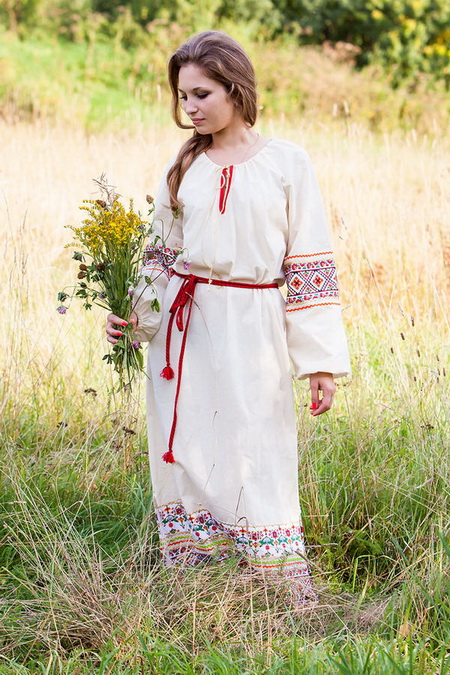


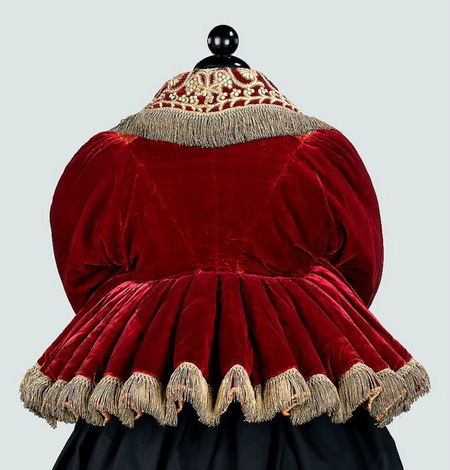



Male
The basis of the men's Russian folk costume in pre-Petrine times was a shirt and pants. The cut of the shirt was simple and convenient for movement and work. Protective ornaments were embroidered on the collar and cuffs. Caftans and zipuns of various styles were worn over national shirts - they were worn by all social classes. These items were made from a variety of materials. The most dandy was considered a caftan with a kozym (high standing collar), as well as a terlik, which, along with a feryaz, was made of gold material. It differed from the latter in the absence of wide loops and short sleeves. This national clothing was worn mainly at court, sometimes trimmed with fur.
With each century, the Russian national costume of men underwent significant changes. Thus, in the times of Peter the Great, the nobility dressed in a European style: in culottes, wigs and other borrowings. In the 19th century, under the influence of urban fashion, Russian men's suits began to be sewn from purchased fabric. The first to undergo transformation were national shirts - they acquired a stand-up collar. At the same time, the usual version of the Russian men's national costume began to change somewhat. Trousers appeared, sewn from a material called nanka or plush (a version of velvet), as well as variations of belts and sashes.
As for the pants, they consisted of two separate legs, and were usually sewn from canvas. Later, varieties like harem pants appeared, which were worn on holidays.
In pre-Petrine times, the princely cloak, the korzno, came from Byzantium. It was fastened on the shoulder with a fibula clasp, leaving the right hand free. The original Russian outerwear is the fur coat. Boyar coats differed from those worn by other classes. They were sewn from the most expensive materials - ribbed velvet, brocade, fur. The fur coat, as it were, completed the image of the boyar - the pillar of society. The Russian nobility could not take off their outerwear in the presence of the sovereign, no matter how hot it was in the royal chambers.
Types of national men's outerwear:
- Zipun was sewn from home-made cloth, with wedges or gathers.
- The caftan is long, with a very spacious lower part. It could be either with a low standing collar or without one. Other names: shabur, kutsinka, gunya, kozhukh (made of sheepskin and calfskin).
- Svita is a robe-like national wide garment. Other names: ponitok, taynik, zhupun, zhupitsa. Sewn from thick cloth.
- Armyak (made of sheep wool). This is a long, flared national garment with a large collar.
- Odnoryadka is a wide ankle-length garment that was also worn by women. A collarless garment with long sleeves.
The national outerwear was similar to women's in design, if you do not count the exclusively male types - bekesha, beshmet. The latter was a caftan, which was intercepted at the waist, sometimes it was cut off, with wedges. Different fabrics were used, even quilted with wadding.



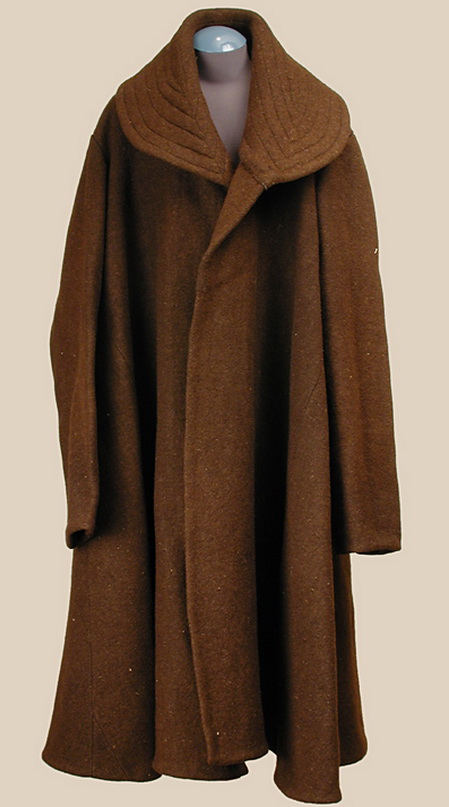

Festive and wedding clothes
The national festive costume of a Russian man was practically no different from a wedding costume. One of the main attributes of the groom was a headdress. It was necessary to wear a hat when getting married in a church; it could only be taken off when the feast began. Usually it was a naked accessory (made of skin with the skin on the outside), or with a fur frill, rarely a simple round one. In some regions, Russian men wore a red scarf, which was folded diagonally and tucked in with a pin. The bride sewed a shirt and pants for the groom.
The groom's national wedding clothing consisted of a red shirt, which was embroidered on the cuffs, collar and hem. The patterns were not only decoration, but also a talisman: they protected the owner or mistress from various troubles. The festive decoration of national shirts were richly embroidered removable sleeves and shoulders, and a collar. Under them, a Russian man wore a white shirt (undershirt, body shirt). The pants were not so bright, the colors were modest, and almost no ornamentation was made. It was necessary to be belted with a sash (leather or fabric). In winter, noble men wore an okhaben (a thing with long decorative sleeves that were tied on the back) and a feryaz on top. The latter was a national garment that was fastened on the chest with patch loops and had long sleeves: the right one was gathered on the arm, and the left one hung freely.
On holidays, Russian women were supposed to wear two outfits - women's and girls'. They differed from each other by the presence of additional attributes.
Russian festive attire is characterized by multi-layeredness. Women wore:
- A magpie, an undershirt. This is a simple basic version of a national item. White was considered a sign of innocence. The hem could be decorated with protective embroidery.
- The second shirt was made of more expensive fabric. Its sleeves were long so that they could be made into frills and decorated with hoops or cuffs with buttons.
- National poneva or sarafan.
- Apron.
- Belt and pendants for it.
- Fur coat (sheepskin coat).
- Coupling (in winter).
- Headdress (crown, bandage), kichka, soroka, kokoshnik.
Russian costumes were necessarily decorated with various signs. The upper world (sky) was symbolized by the headdress. Its ornament consisted of solar signs, and threads with pearls or beads (rain) were also attached. The middle world (air) was the shirt, the lower (earth) was the hem. The latter was often decorated with rhombuses (as a symbol of the field, fertility).
Headwear
Particular attention was paid to headdresses. By them, as well as by national Russian costumes, one could distinguish the nobility from the poor, and also determine where the owner came from. The basis of men's headdresses was a hat. Russian peasants wore felted cap-shaped ones (made of cloth or felt), as well as shorter ones with a fur band. Among other national headdresses were:
- Treukha is a hat lined with fur.
- Tafya - small headdresses that were embroidered with pearls. Only boyars and nobility wore them.
- Murmolka is a national hat with a narrowed brim.
- Gorlatnaya is a tall fur hat worn by boyars on holidays. It was made from the necks of fur-bearing animals.
A Russian girl had to walk around with her hair uncovered.
There was no limit to the variety of girls' national headdresses. They wore:
- A towel (fly, bast) is a narrow piece of canvas with edges tied at the back.
- Circle (hoop) – made from tree bark or cardboard and covered with fabric.
- Ribbon (golden ribbon, bandage) - almost like a towel, only made from expensive fabric, brocade.
- Crown (koruna, bangs, refed, duckweed). A festive national head decoration, which was decorated with beads and feathers.
- A scarf (braid, veil). It was usually unwound and tied at the back.
After marriage, the head had to be covered. So, at first, Russian women wore a young woman's kichka. With the birth of a baby, it was replaced with a horned kichka - a high spade-shaped headdress or povoynik. The product symbolized fertility. One of the varieties of the kichka was the soroka. The difference was that it covered the forehead more, and, on the contrary, revealed the sides. This national headdress was embroidered with beads, feathers, ribbons and artificial flowers. In order not to show the hair, an ubrus - a scarf - was put on the kichka.
Kokoshniks were considered festive national head decorations. Some of their varieties were worn by girls, and mostly by married Russian women when they went out in public. The rest of the time, they did not remove the povoinik or headscarf.

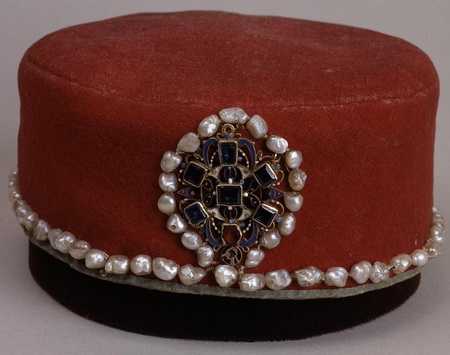
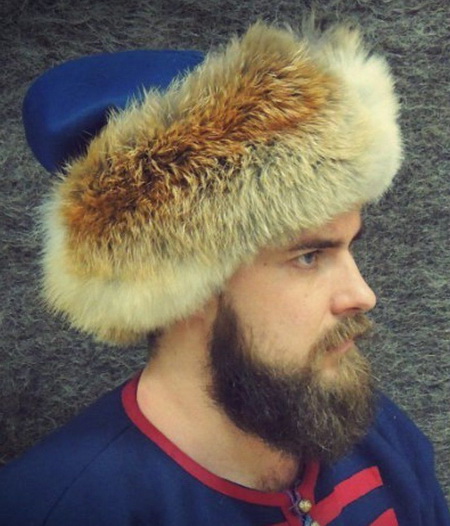



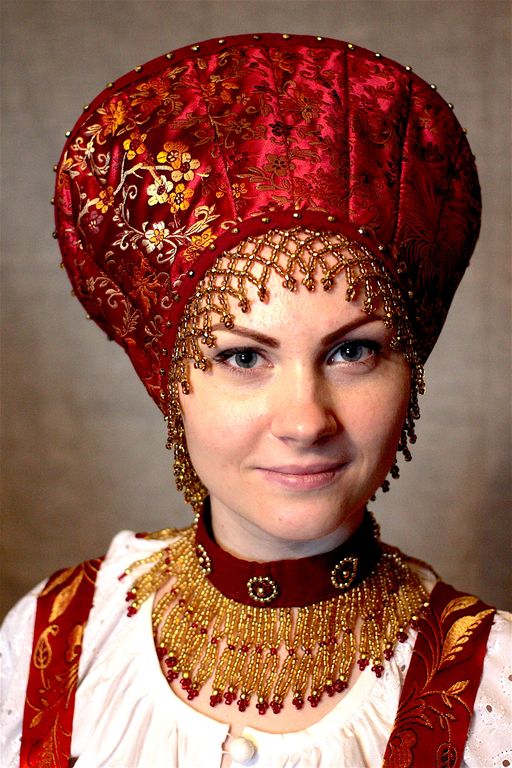
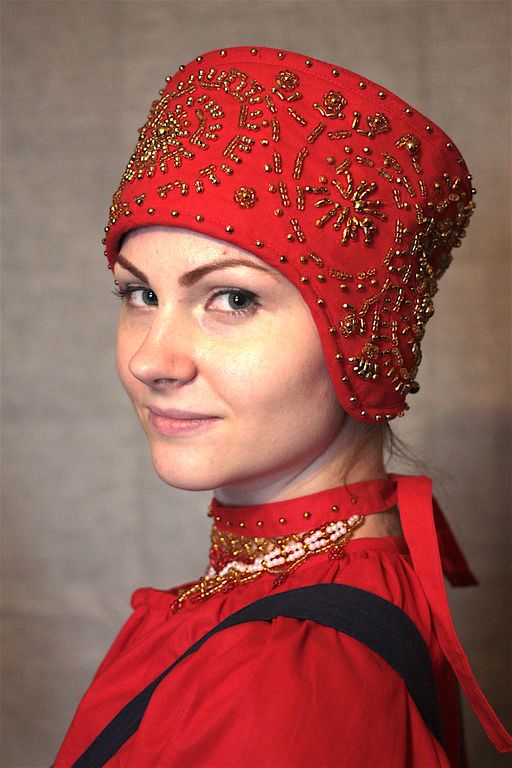
Shoes
In different parts of the vast country, national footwear was called differently: obuvok, obutka, obui, obuya or obuscha. From the history of Russian folk costume, it is known that the Slavs initially wore leather soles, bent upward and fixed on the ankles with a strap or bast. The ancestors of modern boots were called kurpas, pistons or opanki. Around the same time, bast shoes appeared - light national slippers woven from bast, ligature, willow, birch bark. They were worn to work, and only the poorest people wore them constantly, even in winter. With bast shoes, they wore wrappers that were secured with ties. Other names for national footwear: onuchi, portyanki, obtomki, galoshes, zavoi.
Rough country shoes were called postols. In the 10th century, small national boots appeared, slightly above the ankle, with a slit in the front. Before the baptism of Rus, high leather models came into use.
In summer, they wore kurpas, porshnii, and cheboty, sewn from a single piece of leather, which often had heels covered with horseshoes. In the cold season, they wore koty (shoes), boots, oshchetni (made of leather with bristles), and valenki. Boots (ichigi) were quite common footwear. They were made whole (pulled out) or turned out (with sewn-on shafts) from leather. For most Russian peasants, they were festive footwear, they were protected and even passed down as an inheritance.
Men's and women's footwear differed only in design, the style remained unchanged. For children, products were made the same as for adults. Women's festive national boots were embroidered with beads, lace and protective embroidery.

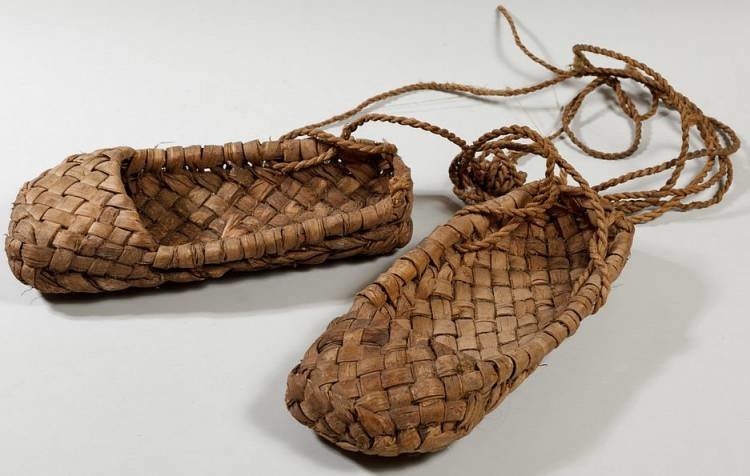
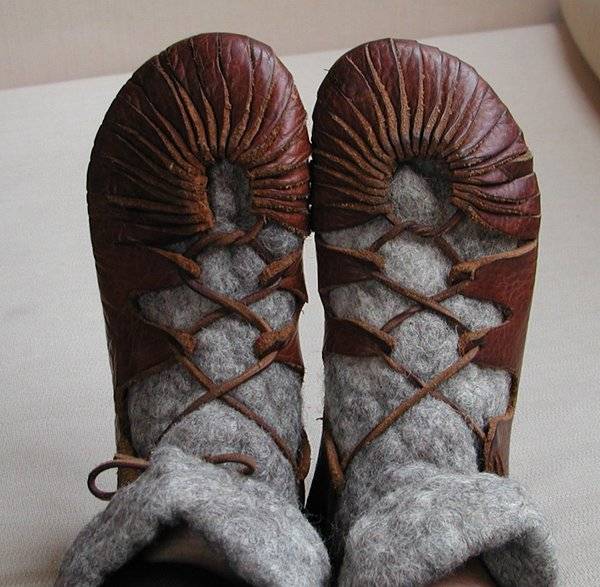
Traditional fabrics and colours
The favorite color of the Slavs was natural white (basic). Yellow, green or orange were made artificially by tanning bark. The common color of clothing was blue, and the festive option was red. The latter was made from the infusion of brick, moraine roots.
The composition of the fabric determined the status of a Russian person: the more refined and expensive the outfit, the richer its owner. Noble people could afford factory-made fabric and expensive export options: silk (pavoloka), aksamite and brocade. Ordinary Russians sewed clothes from wool, linen, hemp. After the 19th century, it was already possible to buy satin, chintz, brocade, damask or braid at village fairs.
Flax acquired a silvery-gray color during dressing, and was bleached with ash, snow, and sunlight. Depending on the degree of dressing, the resulting canvas was coarse, harsh, or thin. The latter was used to sew festive national outfits (scarves, christening shirts, dresses). Coarse canvas was used for undershirts and everyday wear. The most valuable material was considered to be volosen - the wool of a young sheep that was not sheared all year. Threads for embroidery were made from long fibers. Ponyovas, sarafans, and shirts were sewn from ordinary woolen fabric.
Woolen or semi-woolen thick home fabric (cloth, ponitok, sermyazhin) was used for sewing national outerwear. Furs could be afforded by the rich - martens, squirrels, sables were hunted for them. Sheepskin and skins of wild animals were available to ordinary Russian people.
National clothing was always decorated with embroidery and homespun lace. The patterns in the central and southern Russian provinces differed from the northern ones in their rich colors, variety of ornaments: checks, stripes, fir trees, hooves, paws, ledges, burdocks, streams. Lace ribbons with inserts of colored fabric and embroidery were sewn on the edges of national dresses as decorations.
Beads, glitter, ribbons and other decorations were used in embroidery. Drawings could also be embroidered or applied using wax or special boards.
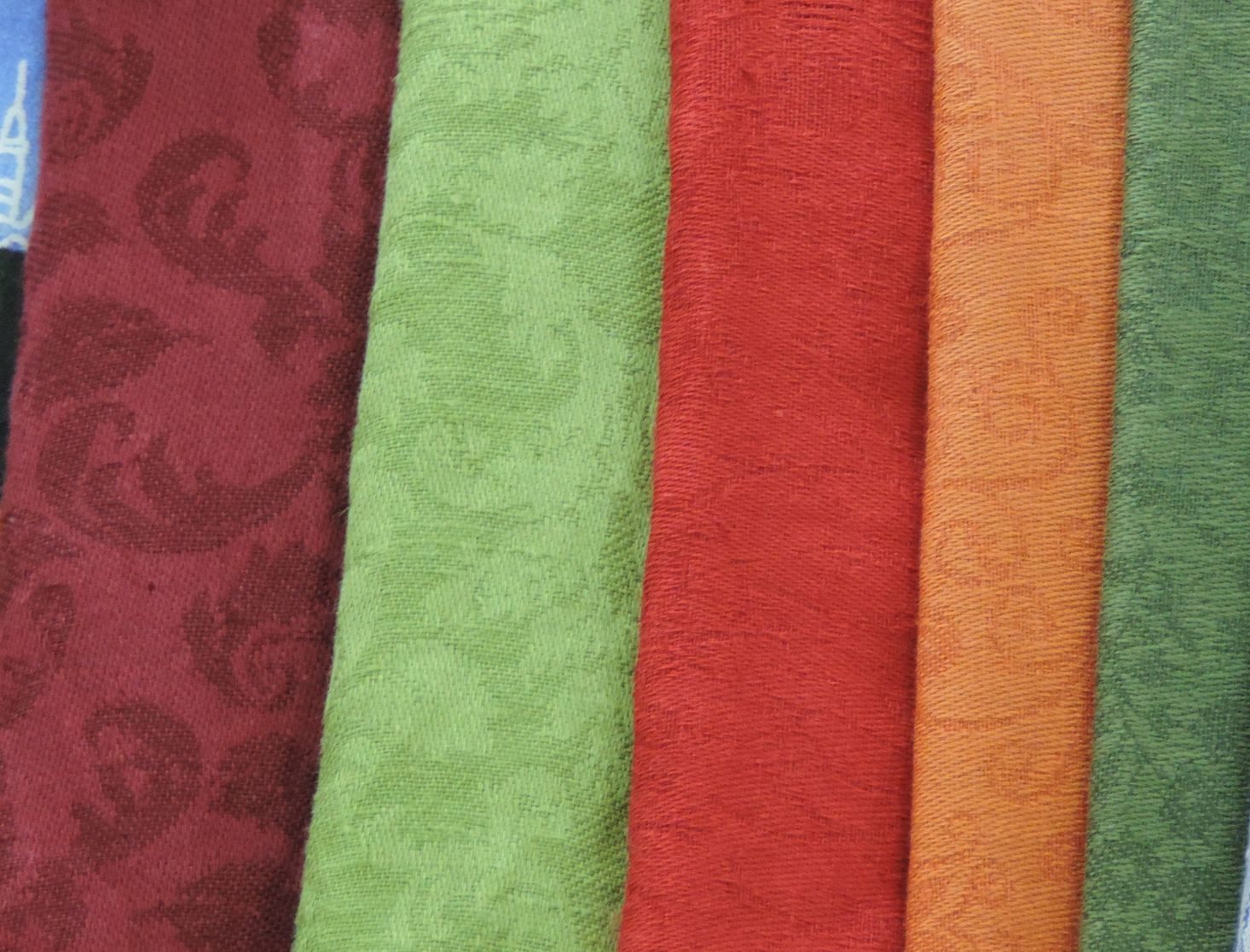

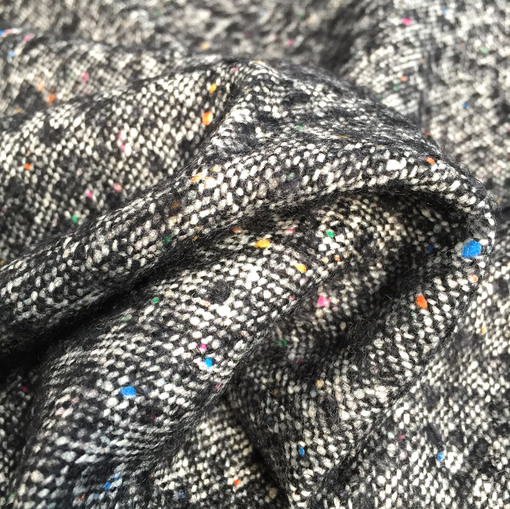

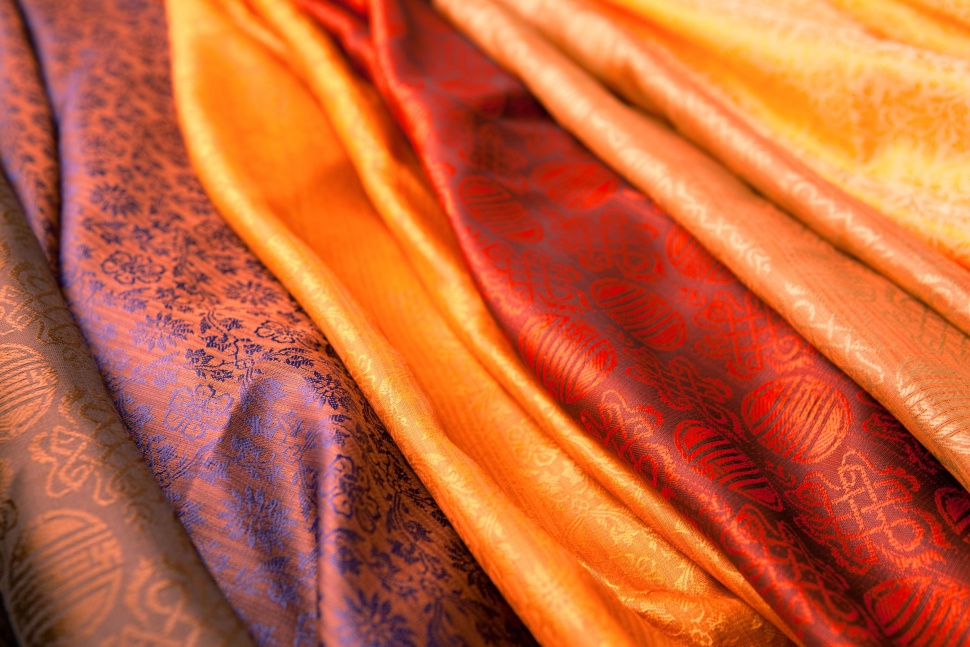
Dress decorations
An integral element of Russian folk costume was a belt. The accessory was used for everything - sarafans, shirts, outerwear. With a belt, things fit more tightly to the body and warmed better. The belt also performed an aesthetic function. Household items were often tied to it: handbags, combs, keys. Belt decorations were buckles, beautifully processed, with glitter, ribbons, buttons, glass beads.
Among the neck decorations, Russian women wore beads and necklaces. The latter were medallions or pendants in the form of a crescent moon - lunnitsa. This name was also given to a decoration like a removable collar on shirts, fur coats, caftans. Expensive collar necklaces were worn by Russian boyars and boyarynyas.
A girl in a national costume made by herself could marry successfully, as beauties were judged by their embroidered apron or decorated sarafan. Their future life depended on their skill. Old Russian costumes were decorated with beads, pendants made of stones and metal, and necklaces. Instead of fasteners, fibulae - pins - were used. Cuffs, chest and neck were decorated. In the 11th century, cuffs were put on the hands - bracelets made of beads and intricately intertwined threads. They were also called false cuffs.
National embroidery, which originated in the pagan period, played an important role in the life of the Slavs for a long time. Ornaments were used to decorate parts of the Russian costume through which evil spirits could influence a person: the neck, chest, hem, sleeves, headdress.
Regional features
Despite different climatic conditions and ethnic characteristics, the clothing of many Russian regions had the same elements. The difference was in some details. Thus, for a woman's image it was important to have:
- shirts;
- national sarafan (poneva or skirt);
- apron;
- shoes;
- headdress;
- outerwear;
- hanging decorations.
According to the classification, southern and northern regions are distinguished. In the first, women wore national ponevas as the basis of their image, while in the second, they wore sarafans.
For men, the costume consisted of:
- shirts;
- ports;
- shoes (bast shoes);
- headdress;
- outerwear;
- belts.
In Russia, national costumes of peoples often differed in embroidery, cut, colors. Each province had its own beliefs and signs, on the basis of which embroidery and lace were created.
As for Russian national headdresses, there was no clear line here. However, there was a small guideline: with a poneva, a horned kichka with a magpie was often worn, with sarafans, kokoshniks of various types or a scarf were worn. In general, the features of the Russian national costume are as follows: manual painstaking work, a lot of decorations and bright colors. The southern costume was the richest. In different provinces, the Russian folk skirt was sewn from three or four wedges.
The region of residence could also be determined by the national kokoshnik. For example, in Pskov they wore a cone-shaped headdress with a "horn" decorated with "cones" along the forehead, and the distinctive feature of the Tver costume was a high flat hat with earflaps and a ponichka covering the forehead. In the central zone, expensive overseas fabrics (silk, satin or brocade) were used much more often.
Elements of national costume in modern fashion
The traditional costume of the peoples of Russia inspires designers of leading fashion houses. The impetus for such interest was involuntarily the revolution of 1917, when Russian aristocrats left en masse for Europe. In addition to family jewels, they brought with them traditional clothing, scarves, shoes and headdresses. The variety of patterns, delicate embroidery, airy lace interested the European average person, and soon Europe began to wear dresses with elements of Russian costume.
Modern clothing has the following features of Russian ethnic style:
- A combination of white and red, as well as blue, green, gold and black colors in things.
- Ancient Slavic ornaments, embroidery.
- Lantern sleeves.
- Ushanka hats, round fur hats, mittens.
- Scarves and shawls.
- Bracelets made of leather and wood.
The Russian national headdress, stylized as a kokoshnik, is often used by shock-lovers for performances and photo shoots, and it also constantly appears at fashion shows.
For example, John Galliano created an ethnic collection based on the Russian national women's costume with sheepskin coats and felt boots. Outerwear in the style of ancient Rus' brought its creator a resounding success. Svetlana Levadnaya, a designer from Crimea, is sure that Russian folk costumes of Russia are not red and yellow sarafans, but something more. She adapted traditions in modern art. Dresses from her collection are made in delicate, pastel colors, hand-embroidered and decorated with fine lace.
The designers of the Tsar Bird brand make full use of Russian ethnic elements, embroidery, ribbons and lace. Kosovorotkas, shirts, scarves, felt boots, caftans and even headdresses in the form of kokoshniks with an ornament of flowers and fairy-tale birds are born in the workshops of the brand as if by magic. Not only ancient national patterns, but also elements of cut, parts of the costume are borrowed by the brand from the heritage of the Russian people.
Video

